The power of X-rays in materials science
EUROPEAN SYNCHROTRON RADIATION FACILITY (ESRF) – a synchrotron research facility in Grenoble, France
SYNCHROTRON – a machine that accelerates electrons inside a circular ring to speeds close to the speed of light and bends their paths using magnets. As the electrons are accelerated along a curved path, they emit electromagnetic radiation whose energy spectrum is proportional to the speed of the electrons
X-RAY – a form of high-energy electromagnetic radiation
BEAMLINE – there are three definitions of a beamline: 1) a physical space within the ESRF’s experimental hall, consisting of an optics cabin, an experimental cabin and a control cabin; 2) equipment that brings the X-ray beam to the material being studied and records the findings; 3) a research space in which experiments are done in collaboration. For a more detailed explanation, visit: www.esrf.fr/about/synchrotron-science/beamline
BLUE SKY RESEARCH – also known as blue sky science or fundamental research, this is driven by curiosity and the outcomes or practical impact are uncertain. However, the blue sky research of 100 years ago underpins the whole of modern technology and scientific research
DIFFRACTION – the way that electromagnetic waves (at the ESRF, X-rays) bend and interfere when they encounter a particular obstacle
ELECTRON – a subatomic, negatively charged particle
SCATTERING – in physics, this is where an electromagnetic wave (at the ESRF, an X-ray) changes its path or direction when encountering physical objects like atoms
SPECTROSCOPY – the study of the absorption and emission of light and other radiation by matter. It strongly depends on the energy (or wavelength) of the radiation and includes the study of the interactions between particles, such as electrons, protons and ions, as well as their interaction with other particles. See www.britannica.com/science/spectroscopy
XMaS – a research facility based at the ESRF that supports the UK materials science communities and is funded by the Engineering and Physical Sciences Research Council (EPSRC): epsrc.ukri.org/research/facilities/access/nationalresearch/xmas
“The ‘acceleration’ within the storage ring is not to make the electrons go faster (like a car entering a highway), but to bend them in a circular trajectory, like the acceleration, or force (F = m a), you feel when you take a sharp turn in your car,” explains Dr Didier Wermeille, who is based at the ESRF. “It is the acceleration of the electrons (the bent trajectory of a charged particle) that produces the X-rays we use.”
Researchers from across Europe use the X-rays to shed light on the position and motion of atoms in any substance of interest, like a ‘super-microscope’. Why is this exciting? Well, synchrotrons can help scientists explore the structures of both inorganic and organic substances in fine detail. For instance, they have revealed the structures of proteins and viruses, helped develop more efficient catalysts and batteries, and identified the chemical states of heavy elements such as uranium.
“Modern technologies are underpinned by advances in our knowledge and function of the materials of which they are made,” says XMaS Co-Director, Professor Tom Hase. “In many cases, researchers are trying to understand the correlation between a material’s useful properties and its structure. This information can help us make better and more efficient devices and materials.” Given that materials behave differently under certain conditions, this involves creating complex sample environments to test their properties under realistic operating conditions.
THE XMAS BEAMLINE
Each beamline at the ESRF is home to a particular research team who uses the X-rays produced by the synchrotron for their own areas of research. One such beamline hosts the XMaS (X-ray Materials Science) research project, which is run by two UK universities. Tom directs the project from the University of Warwick, alongside Professor Chris Lucas from the University of Liverpool. “It is our job to oversee, monitor and manage this multi-million-pound project,” says Tom. “This includes both overseeing the research and ensuring the project remains within budget.”
On the ground, the XMaS beamline is run by a multinational team of four scientists who support and help users to tackle a wide range of scientific challenges. “Our research involves scattering, diffraction and spectroscopy,” says Didier, who is known as the ‘Beamline Responsible’. “I facilitate these experiments, supervise technical upgrades to the beamline, organise the team, liaise with the ESRF’s wider facility, and take care of health and safety.”
Indeed, if high-powered X-ray radiation encounters living organisms, it can be very harmful – but this is not an issue at the ESRF. “The X-ray beam and all equipment and samples are contained in lead-lined, interlocked rooms called hutches, through which no radiation can escape,” says Didier. “Radiation levels can get dangerously high within these rooms, but strict operational safety protocols make it impossible for any person to be in there when the beam is on.”
SYNCHROTRON HISTORY
Synchrotrons have been around in some form for over half a century. They have helped scientists of many disciplines make grand strides in their knowledge, using X-rays to examine the structures and behaviour of minute and hidden objects. “Synchrotrons can produce much more intense sources of X-rays compared to conventional lab-based equipment,” says Tom. “This means that experiments can be performed incredibly quickly. It also means that it’s possible to perform experiments that otherwise would be inconceivable.”
The ESRF was built in 1989, first used in 1994, and world-leading in its capabilities. “The ESRF was built by a consortium of European countries, including the UK, but competition for its use was inevitably fierce,” says Tom. “It was decided to allow individual nations to add their own user facilities, or beamlines, onto the ESRF, and the UK managed to secure a place.” The negotiated deal means that the XMaS beamline is dedicated to UK-led science for two-thirds of the time. Other international ESRF researchers can also use it in the remaining time available.
INTERDISCIPLINARITY AND COLLABORATION
Though the XMaS beamline principally investigates materials science, this does not mean the research exclusively involves materials scientists. “Materials science can be a surprisingly broad term,” says Tom. “At XMaS, we have embraced dental researchers studying hierarchical teeth structure, and scientists investigating the decay of museum artefacts such as the Mary Rose, which was King Henry VIII’s war ship, or baroque organ pipes. We often work at the interface between disciplines, exploiting advances in one scientific area to impact others.”
Reference
https://doi.org/10.33424/FUTURUM245
EUROPEAN SYNCHROTRON RADIATION FACILITY (ESRF) – a synchrotron research facility in Grenoble, France
SYNCHROTRON – a machine that accelerates electrons inside a circular ring to speeds close to the speed of light and bends their paths using magnets. As the electrons are accelerated along a curved path, they emit electromagnetic radiation whose energy spectrum is proportional to the speed of the electrons
X-RAY – a form of high-energy electromagnetic radiation
BEAMLINE – there are three definitions of a beamline: 1) a physical space within the ESRF’s experimental hall, consisting of an optics cabin, an experimental cabin and a control cabin; 2) equipment that brings the X-ray beam to the material being studied and records the findings; 3) a research space in which experiments are done in collaboration. For a more detailed explanation, visit: www.esrf.fr/about/synchrotron-science/beamline
BLUE SKY RESEARCH – also known as blue sky science or fundamental research, this is driven by curiosity and the outcomes or practical impact are uncertain. However, the blue sky research of 100 years ago underpins the whole of modern technology and scientific research
DIFFRACTION – the way that electromagnetic waves (at the ESRF, X-rays) bend and interfere when they encounter a particular obstacle
ELECTRON – a subatomic, negatively charged particle
SCATTERING – in physics, this is where an electromagnetic wave (at the ESRF, an X-ray) changes its path or direction when encountering physical objects like atoms
SPECTROSCOPY – the study of the absorption and emission of light and other radiation by matter. It strongly depends on the energy (or wavelength) of the radiation and includes the study of the interactions between particles, such as electrons, protons and ions, as well as their interaction with other particles. See www.britannica.com/science/spectroscopy
XMaS – a research facility based at the ESRF that supports the UK materials science communities and is funded by the Engineering and Physical Sciences Research Council (EPSRC): epsrc.ukri.org/research/facilities/access/nationalresearch/xmas
Professor Yulan He is a computer scientist at the University of Warwick, working in the field of natural language processing. She is training artificial intelligence (AI) to overcome this challenge through sophisticated reading comprehension exercises. “Language understanding is extremely difficult for computers due to the variety, ambiguity, subtlety and expressiveness of human languages,” she says. She is drawing information from a multitude of sources to provide a knowledge base that computer models can ‘learn’ from, and contribute to, to build the models’ understanding of how we use language.
READING COMPREHENSION
“When we read a passage of text, we usually have an understanding of the meaning of words in the context of the events described, and can then refer back to the ‘theme’ of the passage as we read onwards,” says Yulan. “We can ‘read between the lines’ to establish a deep semantic understanding of text.” Our reading comprehension depends on us building an event structure that represents what is happening in the text, referred to as a situation model in cognitive psychology.
Consider the following pair of sentences: ‘I went to a coffee shop. I had a flat white.’ Even though it’s not explicitly stated, we safely assume the narrator bought the flat white from the coffee shop, given that fits best within the context. We build an event structure of the narrator entering the shop, buying a coffee and drinking it. We also use our background knowledge to know that ‘flat white’ is a type of coffee, despite both words being adjectives that can be used for many other purposes. Yulan is trying to find ways for computers to build similar event structures, using context clues and background knowledge to help them ‘infer’ exactly what is going on in a situation.
FLUENCY IN COMMON SENSE
“A common way of teaching computers to understand text is to first train a language model on large bodies of text, to capture word correlation patterns,” says Yulan. “These models can then be fine-tuned depending on the task they are needed for, such as answering questions.” This is the way that search engines or voice-activated virtual assistants work, for instance, but there are obvious limitations. “Even a small change in an input, such as paraphrasing a question, can decrease the model’s performance,” says Yulan. “They also struggle to automatically acquire common-sense or background knowledge to help their understanding.” For example, think about the times you have used voice-activated assistants to check a fact or play some music. Chances are, there have been times when the assistant has not understood your command or has not picked up on the context.
“We have made some attempts on building in common-sense knowledge for emotion analysis in text,” says Yulan. She gives the example of ‘Boxing Day’, a phrase which, when alone, generally has positive connotations given it is a public holiday. However, if someone texted you saying, ‘I need to work on Boxing Day’, you will assume the phrase was said with little enthusiasm and it is now associated with negative connotations. “We have developed a novel approach which adds an additional layer to existing language models to capture topic transition patterns in human conversations,” says Yulan. “Both topics and common-sense knowledge are stored in a knowledge base that the model uses, or adds to, when attempting to detect emotion in written conversations.” This layer helps the model learn associations between particular phrases, the surrounding context and commonly related emotions.
PICTURES AND WORDS
Yulan is building a framework that extracts events from text, which follow a simple structure called an event triple: a subject (the thing performing the action), the predicate (the action that is taking place), and the object (the thing the action happens to). “Event representational learning aims to map these triples within a multi-dimensional space, where triples with similar semantic meanings are found in nearby locations,” says Yulan. “However, we argue that textual descriptions alone can only go so far.” The phrase ‘a picture is worth a thousand words’ has some truth to it, which is why Yulan’s team are using images as a less abstract way of teaching these models.
As a pan-European facility, the ESRF (and XMaS) is a vital hub for attracting cutting-edge research and the finest minds from across Europe. “The best science emerges when the brightest scientists meet and discuss what they are doing,” says Tom. “These conversations can help stimulate new ideas and approaches that would not have emerged if they were working in isolation, leading to productive collaborations.”
TACKLING SOCIETY’S GRAND CHALLENGES
Much of the equipment at XMaS is expensive to replace, but after 10-20 years of use, XMaS has been upgraded. “The ESRF was updated to produce higher-brilliance X-rays, which meant it was time to update the equipment on the XMaS beamline,” says Didier. “This means we can investigate materials and matter in much finer detail and at an even faster pace. And now there is room for more scientists!”
As Tom goes on to explain, this step-change will enhance XMaS’s capabilities for the next influx of researchers: “XMaS enables UK scientists to do experiments at the forefront of international science. The young students and researchers being trained on the beamline now will become research leaders in time, tackling the greatest challenges our society faces.”
 PROFESSOR TOM HASE
PROFESSOR TOM HASEXMaS Co-Director, Department of Physics, University of Warwick, UK
DR DIDIER WERMEILLE
XMaS Beamline Responsible, The European Synchrotron Radiation Facility (ESRF), France; Department of Physics, University of Liverpool, UK
FIELD OF RESEARCH: Materials Science
RESEARCH PROJECT: Using high-powered X-rays to investigate the minute properties and behaviour of a range of materials under different conditions
FUNDER: Engineering and Physical Sciences Research Council (EPSRC)
 PROFESSOR TOM HASE
PROFESSOR TOM HASEXMaS Co-Director, Department of Physics, University of Warwick, UK
DR DIDIER WERMEILLE
XMaS Beamline Responsible, The European Synchrotron Radiation Facility (ESRF), France; Department of Physics, University of Liverpool, UK
FIELD OF RESEARCH: Materials Science
RESEARCH PROJECT: Using high-powered X-rays to investigate the minute properties and behaviour of a range of materials under different conditions
FUNDER: Engineering and Physical Sciences Research Council (EPSRC)
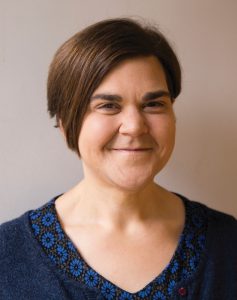
PROFESSOR MAISOON AL-JAWAD
PROFESSOR OF BIOLOGICAL PHYSICS AND BIOMINERALISATION
SCHOOL OF DENTISTRY
UNIVERSITY OF LEEDS, UK
I am interested in how teeth and bones grow; what happens to their structure when they are broken or damaged; and how we can design better ways to repair or replace them when damaged.
I carry out 2D synchrotron X-ray diffraction and X-ray fluorescence experiments at the XMaS beamline to study tooth and bone tissues. Teeth and bones are made of soft tissue (a mixture of proteins, water and other biological molecules) and hard tissue (calcium and phosphate ions calcified into a crystalline mineral called hydroxyapatite). Combined, the soft and hard tissues give teeth and bones the properties they need to function correctly.
Bones comprise around 60% mineral and 40% organic molecules, which means they are strong but have elastic properties, so they don’t break under load. In contrast, dental enamel (the outer coating of a tooth) is made up of 96% mineral and 4% organic components. This makes enamel hard and resistant to wear, such that your teeth should last a lifetime. The mineral within these hard tissues is organised in a very precise way, from nano-sized building blocks to microscopic bundles of mineral, to a whole macroscopic tooth or bone. This is called hierarchical structure and I am interested in how this hierarchical structure grows biologically.
This process is called biomineralisation and I’m interested in how it can be destroyed e.g., through tooth decay, which breaks down the mineral structure of the tooth enamel, and how it can be restored through careful remineralisation treatments.
XMaS enables us to look in great detail, deep inside tooth and bone samples, to probe structural and chemical features from length scales smaller than a nanometre (x10-9 metre), to micron-scale (x10-6 metre).
We have found out that, with careful remineralisation treatments, it is possible to restore the complex hierarchical crystal structure of dental enamel when it has been damaged. This is encouraging because we might be able to suggest better ways to prevent tooth decay in the future, which, in turn will save the health service a lot of money.
We have also found that bone from different sites (e.g. skull bone versus limb bone) looks very different at the sub-nanometre and nanometre length scales. This gives us an insight into the role that crystal structure might play in the effects of osteoporosis on bones in later life.
• Open Wide, a student-led project based at the University of Leeds’ School of Dentistry, works with children aged 4-18 and prioritises pupils from backgrounds that are under-represented in dentistry: www.openwidedentists.co.uk
• The Dentistry Summer School is designed to give Year 11 and 12 students an insight into life as part of a dental team, and the science behind dentistry: www.healthsciences.leeds.ac.uk/events/dentistry-summer-school-2021

PROFESSOR WUGE BRISCOE
PROFESSOR OF PHYSICAL CHEMISTRY
SCHOOL OF CHEMISTRY
UNIVERSITY OF BRISTOL, UK
At XMaS, my team and I have studied how molecules (called surfactants, lipids and polymers) organise at interfaces – surfaces that form the boundary between different matter. This interfacial structural information is important for nanoscience, understanding biological processes, and industrial applications.
Typically, we shine an X-ray beam at the interfaces and the reflected X-ray beam can be analysed to obtain information, such as the thickness, density and packing in the molecular layer at the interface.
XMaS uses the world’s brightest light, and we can make use of it to probe buried interfaces that cannot be accessed through other methods. The molecular details of the structures are sometimes surprising, and this helps us advance our understanding of how molecules behave at interfaces.
Beyond scientific curiosity, such knowledge has wide ranging implications. For instance, we have applied our research findings and knowledge to formulate eco-friendly artificial snow, which has been used in many Hollywood films and public events. We are also helping people in industry understand how interfacial molecular layers can be optimised for their functionalities in personal care products and lubricants for future transport.
• The Bristol ChemLabS Outreach programme engages with teachers, schools and students of all ages: www.chemlabs.bris.ac.uk/outreach/chemnet
• Bristol ChemLabS also has a YouTube channel, courtesy of Dr Jonny Furze, which includes teacher training videos: www.youtube.com/channel/UCD7Gud4DucBvmw_zCTKe70g
• The Bristol Outreach Project has a website aimed at post-16 students, which showcases the research done at the University of Bristol: bristoloutreachproject.wordpress.com
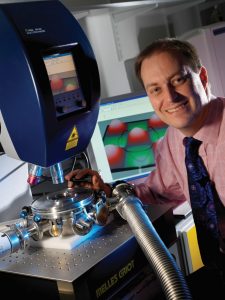
PROFESSOR MARKYS CAIN
TECHNICAL DIRECTOR
ELECTROSCIENCES LTD, UK
I have always loved physics and dreamt of running my own research company from a young age. I managed to secure a dream job at the UK’s National Physical Laboratory (NPL), setting up a new research group devoted to ‘functional’ materials. These are materials that have useful sensing or actuation properties. They’re sometimes called ‘smart materials’ because they respond in a useful way to changes in their local environment.
I left NPL and launched my new company, Electrosciences Ltd, in 2015. My main interests are piezoelectric, ferroelectric and other smart/active materials used for medical scanning systems, sonar, haptic touch screen technology, nanometre precision actuators and other sensors for a whole range of industrial applications.
I have collaborated with the wonderful team at XMaS for probably a couple of decades now. My research is centred on the development of in situ or operando methods of characterising functional materials. I use X-rays to probe the materials’ electrical, dielectric and functional performance. The neat thing is that we have worked out ways of synchronising all these measurements. This is important because we can now start to paint a picture of why a material behaves in the way that it does.
Electrosciences Ltd. works with many industrial companies that are developing new materials or using novel materials in new ways. One example is the use of piezo-materials in the treatment of arthritis. All of these materials benefit enormously from discovering the links between their function and fundamental crystalline structure, as we test them in conditions that match their real applications (stress, temperature, strain, magnetic and electric fields, and so on).
Markys has demonstrated the use of smart materials to a class of 4–5-year-olds, which shows that many companies are dedicated to sharing their work with students and schools. It is well worth contacting companies near you to see what they can offer.
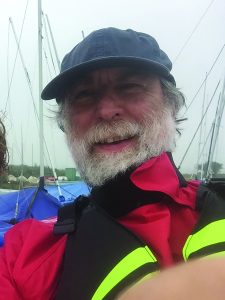
PROFESSOR MARK DOWSETT
EMERITUS PROFESSOR IN PHYSICS, THE UNIVERSITY OF WARWICK, UK
HONORARY FELLOW IN CHEMISTRY, GHENT UNIVERSITY, BELGIUM
Since I was a small boy, I’ve been fascinated by making things. Back then (in the 1950s) it was Meccano™ cranes, wooden model boats and spaceship interiors inspired by Dan Dare (from The Eagle comic). In the 60s, my interest evolved into making real sailing boats, rockets, radio sets and hi-fi. Now, it’s scientific instruments!
Through XMaS, I work with Professor Mieke Adriaens from the Electrochemistry and Surface Analysis Group at Ghent University. She and Iuse XMaS to watch chemical reactions on surfaces in real time: that is, as they happen. We can see intermediate reactions, how reactions start and when they come to an end. We use a special electrochemical and environmental cell (eCell) to watch how surfaces change when they are exposed to gases, in corrosive liquids, or coated with protective coatings.
These experiments are important in a huge range of applications, from the study of contraception devices to the corrosion of metals (especially heritage metals), and the development of protective coatings.
Recently, we had the privilege of working with scientists from the Mary Rose Trust to examine metal artefacts recovered from the seabed over 30 years ago. When objects are taken from the sea they rapidly corrode in air and need immediate special treatment if they are to survive. This is even more important if they’re put on long-term display in a museum or used for archaeological study. Using X-ray diffraction, we were able to identify unusual compounds on the surfaces of the metal artefacts, show that their conservation had been very effective, and discover traces of other metals – possibly from the tools used by Tudor metalworkers.
Another study we are involved in looks at the design of less intrusive and more effective intra-uterine devices (IUDs). IUDs, also known as the coil, are used for birth control and release copper in the womb. In a PhD project, we made a version of the eCell to simulate the chemical environment of the uterus and measured the chemical changes on the surface of the copper used to make the device. It’s important to know how IUDs actually work before you can improve them!
It’s demanding but enormous fun to work on XMaS with the XMaS team. Between us, we have come up with a couple of new instruments to try and, lately, I’ve also been writing software codes to help other researchers on XMaS analyse their data.
The Mary Rose Museum has everything you need to know about King Henry VIII’s warship – including a virtual museum: https://maryrose.org
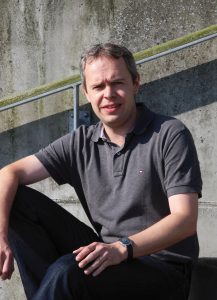
DR JAKOB KJELSTRUP-HANSEN
ASSOCIATE PROFESSOR
UNIVERSITY OF SOUTHERN DENMARK, DENMARK

DR MATTI KNAAPILA
DEPARTMENT OF PHYSICS, NORWEGIAN UNIVERSITY OF SCIENCE AND TECHNOLOGY, NORWAY
We are interested in organic electronics, which is a new branch of electronics based on plastic materials. In contrast to most electronic devices today, which are hard and rigid, organic electronics enable devices to be mechanically flexible (bendable and possibly stretchable). These materials could be used to create wearable devices that are integrated into clothing, or stretchable OLED displays that wrap around objects. OLED stands for organic light-emitting diode, which is basically a light source used widely in electronics, like smartphones.
Organic electronic devices are still at an early phase. We develop and study such devices to find out how we can improve these to a level where they can be used in real-world applications.
The plastic materials used for organic electronics consist of microscopic molecules that form a thin layer on a substrate. The performance of the organic electronics component strongly depends on how the molecules are organised on the substrate – the so-called microstructure. Our research at XMaS uses X-rays to characterise the microstructure to better understand how we should fabricate thin layers.
Our findings will help us develop organic electronics components that perform well. XMaS allows us to use very intense X-ray beams and sophisticated detectors, beyond what is possible with small-scale equipment in university laboratories. Using a technique called grazing incidence X-ray diffraction (GIXRD), we can study the features and functions of thin layers; in particular, how the organic molecules are organised when they form thin layers on the substrate.
Our research projects are mostly fundamental and curiosity driven, but the intended impact is to improve organic electronic devices for the future. Our research at XMaS connects us with other researchers who have similar focus areas, which means we can work on exciting collaborations that go way beyond what is possible in individual universities alone.
• Many of the engineering programmes at The University of Southern Denmark and all the master’s programmes at the Norwegian University of Science and Technology are taught in English. Students from all over the world are welcome.
www.sdu.dk/en/uddannelse/ingenioer
www.sdu.dk/en/uddannelse/moedsdu/studerende_for_en_dag/ingeniorstuderendeforendag
www.ntnu.edu
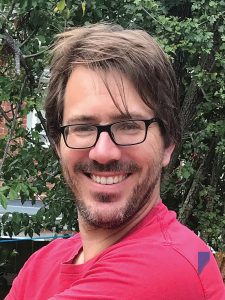
DR PETER WELLS
ASSOCIATE PROFESSOR
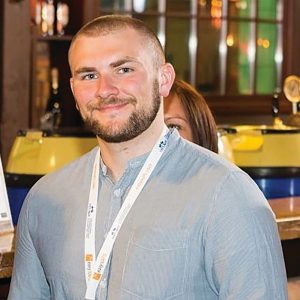
GEORGE TIERNEY
PHD STUDENT
SCHOOL OF CHEMISTRY,
UNIVERSITY OF SOUTHAMPTON, UK
The main focus of our research is the study of catalytic processes. Catalysis underpins vast aspects of modern society: it is essential for transportation, the production of food, the development of active pharmaceuticals, and many other important industries. Furthermore, new catalytic technologies are essential as we transition towards a net-zero carbon future.
A catalyst promotes chemical transformations by lowering the energy input required, whilst not being consumed in the process. However, there is a significant distinction between not being consumed and remaining unaltered.
Our projects at XMaS focus on two major strands: i) the upgrading of waste plant matter (i.e., biomass) to useful products, and ii) automotive exhaust aftertreatment applications for clean air.
Many current chemical commodities – that are needed for our material world – are based on fossil resources. However, there is a need to develop a new supply chain, based on recycling waste material into useful chemical building blocks. Here, waste biomass is a plentiful and renewable feedstock. A feedstock is any renewable, biological material that can be used directly as a fuel, or converted to another form of fuel or energy product.
NOx emissions from diesel cars contribute globally to many premature deaths. For exhaust aftertreatment, we have been investigating the role of palladium (Pd) nanoparticles for the selective oxidation of ammonia – by selective, we mean to only produce the benign products of nitrogen and water.
Our results on supported nanoparticle catalysts that were measured at XMaS are very exciting. The work on ammonia oxidation confirmed the presence of a type of Pd structure that had not been reported previously. This interstitial Pd nitride structure – where N sits within the voids of the metallic Pd sponge – had a very important role in stopping the formation of harmful NOx products.
Whilst there are large numbers of papers that discuss catalyst design, very few of them provide an understanding to how these remnants from catalyst preparation influence catalyst operation. By using XMaS, we have been fortunate to add to the growing understanding of how minority components, not removed during catalyst preparation, can play a crucial role in the functioning of catalysts.
Southampton University offers an extensive programme of outreach activities for all ages.
www.southampton.ac.uk/chemistry/outreach/index.page
Contact a university near you to find out if it offers similar experiences.
XMaS is committed to training students and early career researchers and, as such, has a wide range of outreach activities to fulfil this goal. “Students are our future, the next generation of X-ray scientists,” says Tom. “Moreover, they often have exciting new ideas to offer us, meaning we benefit from the interaction as well as providing students with a unique training experience.”
The students who will become the next generation of materials scientists are not only those doing research degrees, but also undergraduate and school students. The XMaS Scientist Experience is a UK competition for Year 12 female physics students to win an all-expenses-paid four-day trip to the ESRF. “The competition is designed to encourage female students into scientific careers where they are seriously under-represented,” says Tom. “Winners get the opportunity to visit the ESRF, see synchrotron beamlines in action, take part in lab experiments, and talk with successful female scientists.” The competition involves completing an assignment on the achievements of a leading female scientist. For more information, visit: warwick.ac.uk/fac/cross_fac/xmas/impact/outreach/xmas_scientist_experienceb.
The XMaS team at the University of Warwick organises a Science Gala every year. “The Gala showcases all physics, from astronomy to particle physics, as well as materials science,” says Tom. “There are activities suitable for ages 6-18, all with the message that science is fun and exciting and can lead to a wide range of careers.” More information can be found at: warwick.ac.uk/fac/cross_fac/xmas/impact/outreach/sciencegala.
The XMaS team and the latest research findings can be found on the XMaS website: www.xmas.ac.uk. The Twitter page also provides an insider view into the XMaS beamline: twitter.com/XMaSBeam. Accessing XMaS through the website and Twitter is a great way to keep up to date with outreach activities that might interest you.
The XMaS team is part of a wider ESRF network, which also offers its own range of outreach activities. This includes site visits for schools, internships and summer schools, and the Synchotron@School programme, a one-day programme of experimental workshops and site visits for high school students. Visit the ESRF website: www.esrf.fr/home/education.html
The ESRF sits within the EPN campus, an international science hub in the French city of Grenoble. The institutions within the campus have a wide range of career opportunities, from core science to administration, outreach, publications, and many others. Site visits can often be arranged. If you want to learn more, visit: www.epn-campus.eu
Materials science is a broad-ranging subject based on investigating and manipulating the properties and behaviour of different artificial and natural materials. This involves understanding the physics and chemistry of matter, and the manufacturing and engineering of materials.
At school, key subjects to take to prepare for a degree in materials science include physics, engineering, mathematics and chemistry. Other scientific subjects such as computer science and biology could also prove useful. As Tom says, “Many people do not start out as material scientists. A ‘materials scientist’ can cover a multitude of disciplines; it’s really about working at the interface between different subjects and understanding how fundamental processes work in real systems.”
Career Explorer offers a good explanation of what a materials scientist does, including the salary range (in US dollars): www.careerexplorer.com/careers/materials-scientist
“The good news is that the materials industry is well-regarded as it contributes 200 billion each year to the UK economy,” says TheUniGuide, which gives a great introduction to studying materials science at the university level: www.theuniguide.co.uk/subjects/materials-science
Prospects provides a list of careers open to graduates with a degree in materials science:
www.prospects.ac.uk/careers-advice/what-can-i-do-with-my-degree/materials-science-and-engineering
Write it in the comments box below and the XMaS team will get back to you. (Remember, researchers are very busy people, so you may have to wait a few days.)

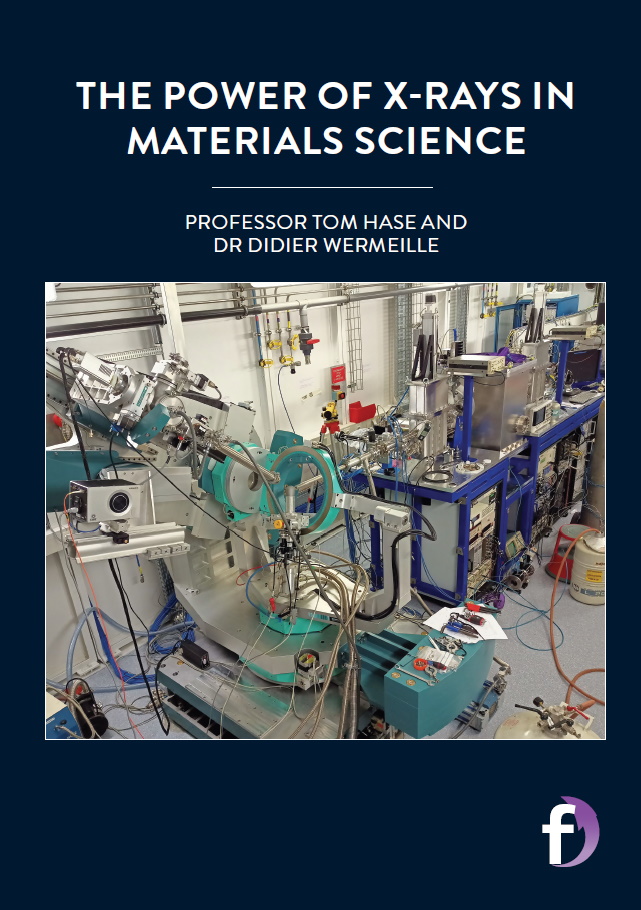


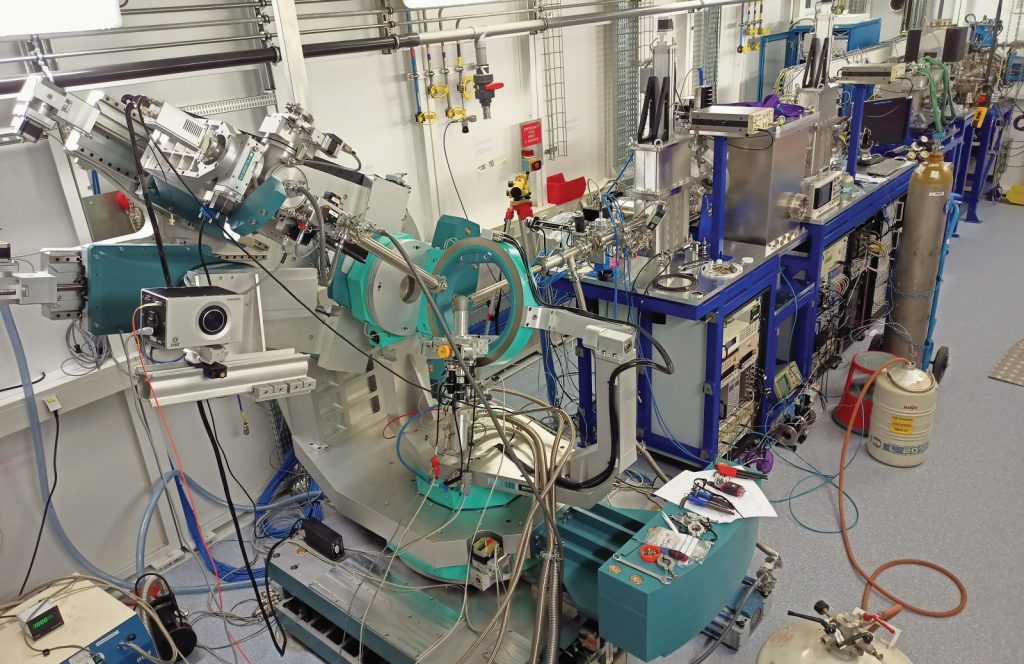

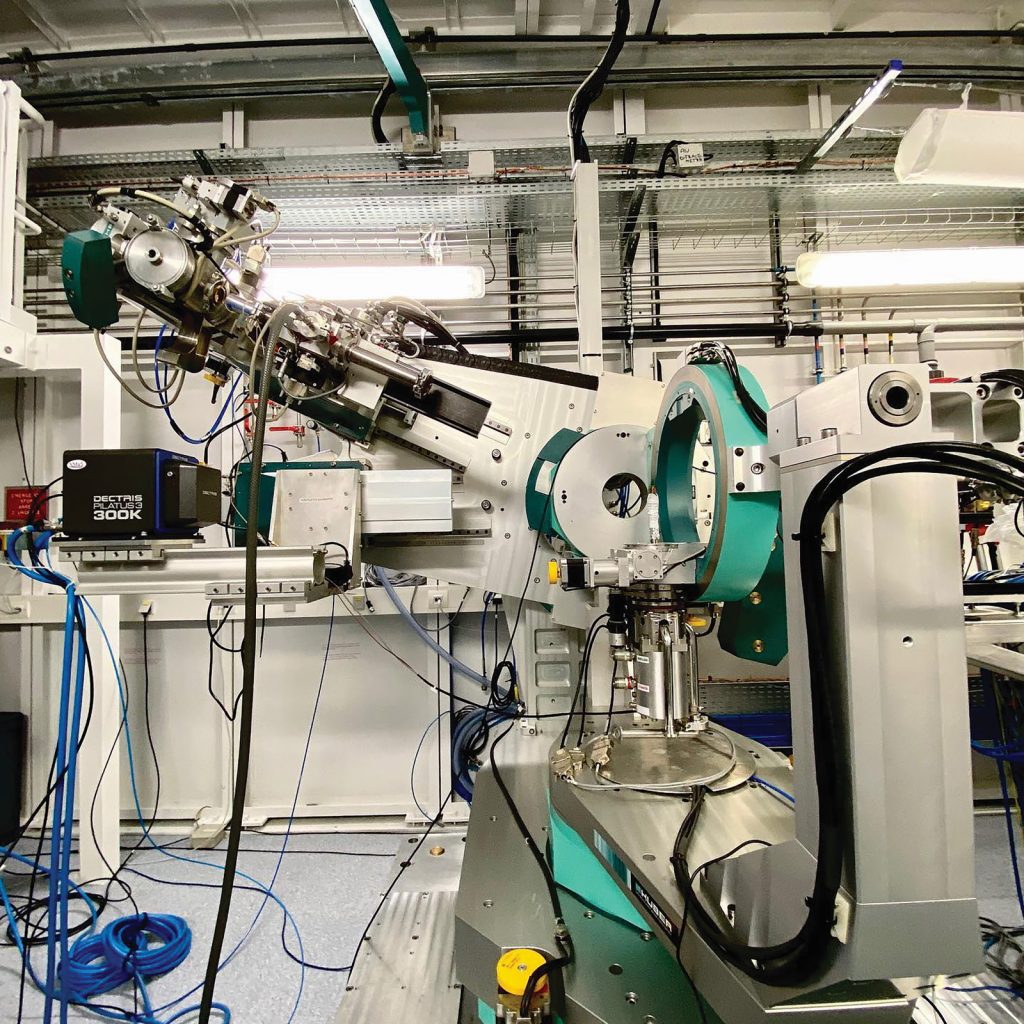
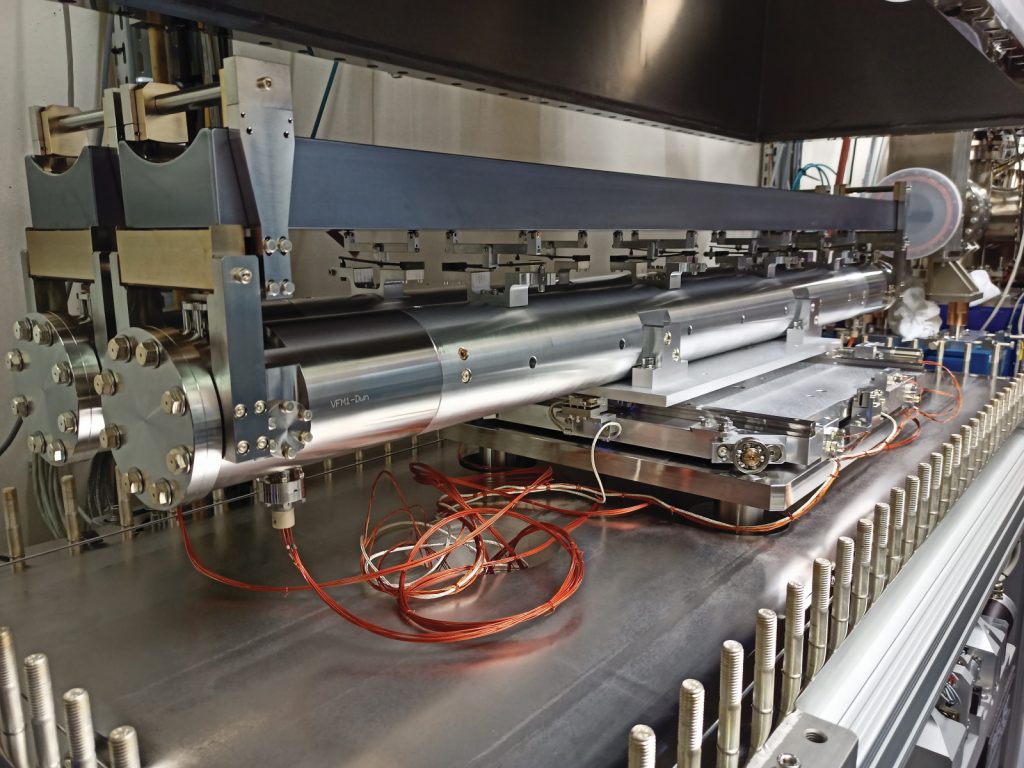

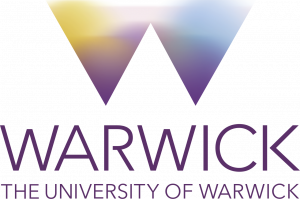


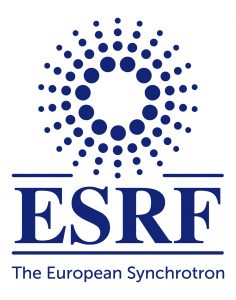
Hi,
This is Md Habibur Rahaman, from university of new south wales, Sydney.
I am a final year PhD student from school of science.
I have had some experiments using GIWAXS to analyze the out of plane crystallinities in organic materials which I am using for organic solar cells.
My question to the xMas team is that, Could we apply a technique by which we can find out the phase purity of a given domain by GIWAXS?
Any kind of interactive session is highly appreciated from my side.
Thanks for your time.
Kind Regards,
Habibur
PhD Student
UNSW
Hi Habibur
Sorry for the delay in replying. Depending on the crystallinity of your (solar cell) materials, you will get more or less well-defined powder rings or oriented blobs in the GIWAXS on your 2D detector at specific locations based on the ordering within and between the organic molecules. Your question really comes down to what you mean by “the phase purity of your out of plane crystallites”. If, by phase purity, you mean different structural phases then you can look at the shape and distribution of the GIWAXS pattern. To determine a phase of the material, you need to compare relative intensities of different Bragg reflections. So, several rings or 2theta intensities will be needed and this might mean working at high photon energies and/or at close sample-to-detector distance. This (for one phase) is already difficult. To distinguish between two (or different) phases, you have to identify the Bragg peaks associated with each and compare their relative intensities and shapes. The presence of multiple phases may manifest through asymmetry in peak shapes or peaks in unexpected locations. On the other hand, if by phase purity you are referring to stoichiometry it is much more difficult as you really need to look at the relative peak intensities which are more prone to experimental artefacts.
An alternative may be differential scanning calorimetry (DSC). The technique looks at how materials behave at phase transitions (normally associated with heating the sample). Pure systems will have a sharp phase transition, but these would be broadened if there were multiple stoichiometries or phases I expect. I am not an expert, but it might be worth looking into. An alternative would also be some sort of spectroscopy such as IR or even Brillouin Light scattering. I am an expert in neither, but you might be able to seek others who are.
Thanks again,
Tom